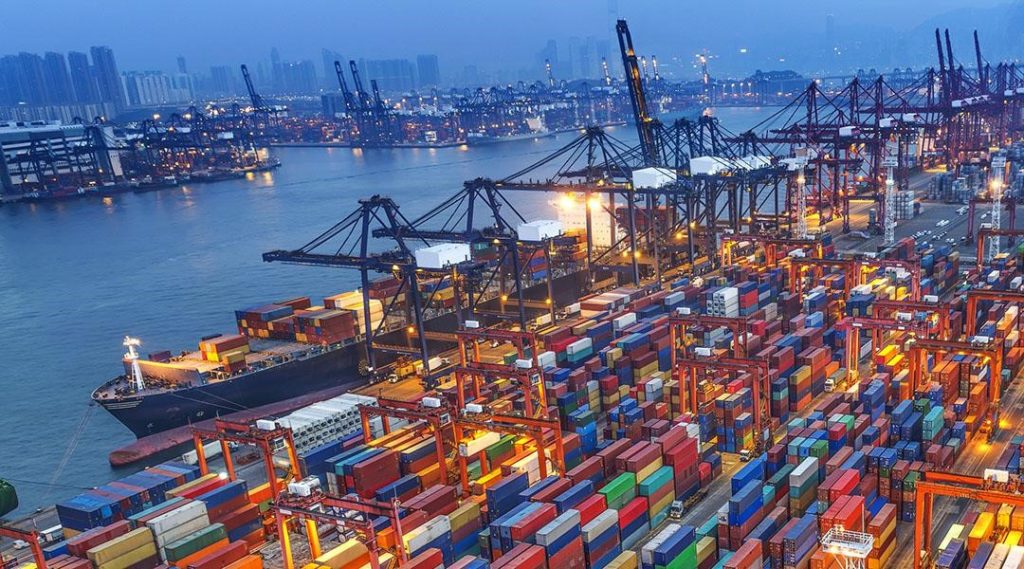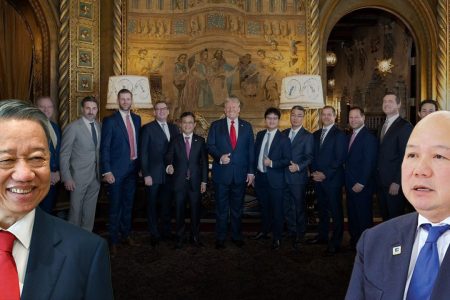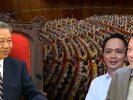
Senior economist Le Dang Doanh said that “Covid-19 is an opportunity to reform and restructure the economy of Vietnam”
A leading Vietnamese economic expert, Dr. Le Dang Doanh, commented to VOA that Vietnam’s economy is suffering from the negative impacts on many aspects of Covid-19 epidemic, but this is also a time to accelerate the country’s economic reform and restructuring to „be less dependent on a single market.“
Earlier, on Feb 12, the Ministry of Planning and Investment published a report assessing the impact of the Covid-19 epidemic on Vietnam’s socio-economy. In its latest report, the ministry reduced its GDP forecast to just 5.96% if the epidemic persisted until the second quarter, compared with the year’s target of 6.8%.
“One is the aviation and railway industries have suspended. Secondly, tourists from China account for about 37%, in Quang Ninh can account for up to 60%, then now greatly reduced, almost no longer. Third, Vietnamese enterprises need Chinese spare parts.”
In addition, according to Mr. Doanh, the fact that thousands of Chinese workers returning home for Tet yet have not been allowed to return to Vietnam to work also has a significant impact on factories and constructions in Vietnam, besides farm produce congestion due to decreasing trade activities caused by the epidemics.
According to statistics from the General Department of Vietnam Customs, Vietnam’s export turnover to China in 2019 reached $75.45 billion, accounting for nearly 30% of Vietnam’s total export turnover, while imports only reached $41,4 billion.
With such a nearly one-third dependent economy imported from China, the disruption of raw material sources from factories in neighboring countries because of the Covid-19 epidemic poses big challenges for Vietnamese businesses.

Dr. Doanh added: “Textile enterprises order for yarn, fabric, and buttons from Chinese factories. By the end of February, their reserves will run out, so if they cannot solve, it will be difficult.”
Vietnam’s economical dependence on China, apart from policy mechanisms, is also due to what he called a „natural dependency.“
“China is right next to Vietnam, with 1,400 km of borders and the Gulf of Tonkin so very close. Second, Chinese materials and goods are cheap and they respond very quickly to Vietnamese requirements. For example, for textiles, if Vietnam receives contracts that require changing the type of fabric, buttons … it is difficult for companies in Italy or other countries, but no problems for Chinese firms as they adapt very quickly.“
Therefore, it is inevitable for Vietnamese enterprises to import many goods and raw materials from neighboring country.

There is no basis to conclude that the whole Vietnamese economy is affected by the Covid-19 epidemic. However, with an economy where small and medium-sized enterprises account for 98% and depend heavily on raw materials from China, the impact of temporarily interrupting trade with „world factories“ is a nightmare for them.
As for the GDP of the country – it will certainly be reduced, let the ministries calculate and make an assessment. Personally, I will look at how the World Health Organization (WHO) information about the outbreak is positive or more dangerous to diagnose the economic situation. Rather, it is to directly assess the health of our business, and the relevant category is footwear.
Certainly, the number of Vietnamese industries and businesses dependent on raw materials from China is not less than 50%. These are industries such as textiles, footwear, construction materials, agricultural production, auxiliary materials …
And the most vulnerable is the businesses producing agricultural products. They depend almost 100% on the Chinese market, and are crying, crying out loud.

By the end of February, small and medium-sized businesses will surely die.
What about finding alternative sources of raw materials from other countries and new markets to replace the Chinese market?
It’s easy to say, but with more than 30 years of struggling in the marketplace, I can’t keep riddling or imagining those two things like moving from right hand to left hand easily.
Almost every business owner shares my thoughts. All are „stuck“ in the flow of production chains, business chains.
The thing is like this: Where is the place to provide materials that are both fast, cheap, and improvable to the most flexible customers? That is China. Where is the market like Vietnam that allows payment of payments, exchanges, compensation, order each piece to every ton, and the creative adaptations are very quick to meet the needs of consumers? That is China.

That’s not to mention another fact: when Japanese or Korean investors order Vietnamese enterprises to process production, raw materials are also supplied by China.
Of course, even with the need to buy materials from other countries to replace China, it takes time, at least six months. It is a time to scour, search and exchange for them to supply the right materials according to the requirements of the business.
Certainly, once found, businesses will have to recalculate the price, so that the price is not too expensive compared to Chinese goods, but the quality is equivalent to ensure competitiveness.
In case, the price is increased, it will mean that it can not be sold to the market, or it must spend a lot of time, effort in marketing and persuading customers. Not so easy.
One fact: no matter how dynamic a business is, change the whole plan. They also have to reduce targets, reduce labor, reduce working hours of the indirect block; balance material inventory, etc.
And it will also promote online sales, launching employees to find customers at home. Now due to the outbreak, customers can not be gathered, so will actively seek customers to offer.

In a „high“ perspective, the Government needs to pay more attention and act more aggressively to support businesses, even after the epidemic is overcome. Obviously, the consequences will last until the end of 2020 at least.
By cutting interest rates sharply, not dripping. And temporarily do not inspect businesses according to annual targets anymore. Stop the imposition of some new laws and regulations that do not support businesses.
As far as I know, Singapore and Taiwan have publicly helped the affected businesses of Covid-19. The mode of support is to reduce interest rates, continue to extend loans. Their lending rates have been low, now even lower; loan conditions are not difficult. For Taiwan, from 2.5% / year to 1.2-1.5% / year. Singapore also dropped from 1.5% to 0.8-1% / year.
In Vietnam, banks also said they would lower interest rates, but with that, businesses had to prove the damage; and annual interest rates also fluctuate around 7%-9.5%. So Vietnamese businesses are very disadvantaged.

„Escape from China’s influence“ is a topic that many Vietnamese economists have discussed, lobbied, and made recommendations to the government, especially after the economic dependence on a Chinese market began to show negative impacts on the socio-economic situation of Vietnam.
According to Dr. Doanh, in order to do this, requires Vietnam to make a great effort and even accept the initial disadvantages.
“The Chinese are very good at business and they can enlist Vietnamese customers with many tricks. Therefore, in the coming time, when Vietnam wants to diversify and multilateralize, it may have to adjust some products and some customers, and perhaps the prices of some products are inevitably increase.“
“Vietnam has a saying “Something Good Always Seems To Come From Something Bad.” In this situation, the Vietnamese economy will have to restructure, renew production, find new markets, new components and channels.”
Dr. Doanh hopes the authorities can turn „risk“ into „opportunity“ to accelerate the reform and restructuring of Vietnam’s economy, based on the opportunities that are opening from cooperation with the EU, the US and other Asian countries.
China is a country that has thoroughly applied communism to rule over 1.4 billion people. The moderate voices of criticism in the mainland were suppressed, persecuted and imprisoned.
Vietnam still sends high-level delegations to China to learn this totalitarian model, to apply it in the country, the Party has eliminated talented people to replace individuals who only know their interests and the interests of their party.
Now, the consequences of the ignorance of the Vietnamese party and government leaders are pouring on millions of Vietnamese people and businesses. They will continue to have to die and go bankrupt in the near future, because the dangerous virus comes from China.
Trung Hieu from Hochiminh city – Thoibao.de (Translated)




























